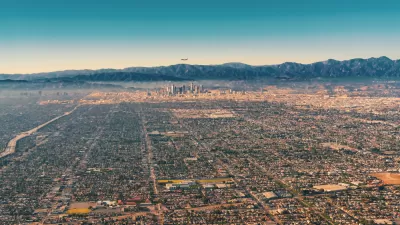Big cities saw the sharpest population declines during the pandemic. Is the trend here to stay?

With so much attention focused on the so-called exodus from big cities caused by the pandemic, research shows that "most big cities with populations exceeding 250,000 showed lower population growth in the year the pandemic began than in the previous year, and nearly one-third of them registered their lowest annual growth in the decade," writes William H. Frey for the Brookings Institution. "Still, only a few of these cities—mostly the nation’s largest—showed sharp population losses during the year COVID-19 began. Many of the others either continued population losses or slower gains that emerged earlier in the 2010s decade—or registered growth rises."
Big cities, by far, saw the greatest losses in population as people sought more affordable housing in outlying suburbs, helped along by the growing opportunities for remote work. This trend existed before the pandemic, but "large cities especially showed exceptionally slow or negative growth during the pandemic year."
"The most recent year’s city growth declines gave further impetus to the suburban growth advantage that took root midway in the 2010s decade. Earlier in that decade, a unique phenomenon emerged: a growth advantage for cities over their surrounding suburbs." But this short-lived advantage, "much of it attributable to the impact of the 2007-09 Great Recession and down housing market, which 'stranded' many young adult millennials in urban centers," has yielded back to the "broader suburbanization patterns that have been at work in most major metropolitan areas since the middle of the 2010s decade."
Whether or not the growth slowdowns precipitated by COVID-19 continue, writes Frey, "it is important to place them in the context of a 'shock' to an ongoing system of selective population dispersion that was established several years before the pandemic began—one that new generations of young adult movers may or may not choose to follow."
FULL STORY: America’s largest cities saw the sharpest population losses during the pandemic, new census data shows

Americans May Be Stuck — But Why?
Americans are moving a lot less than they once did, and that is a problem. While Yoni Applebaum, in his highly-publicized article Stuck, gets the reasons badly wrong, it's still important to ask: why are we moving so much less than before?

Using Old Oil and Gas Wells for Green Energy Storage
Penn State researchers have found that repurposing abandoned oil and gas wells for geothermal-assisted compressed-air energy storage can boost efficiency, reduce environmental risks, and support clean energy and job transitions.

Placekeeping: Setting a New Precedent for City Planners
How a preservation-based approach to redevelopment and urban design can prevent displacement and honor legacy communities.

Colorado Lawmakers Move to Protect BRT Funding
In the face of potential federal funding cuts, CDOT leaders reasserted their commitment to planned bus rapid transit projects.

Safe Streets Funding in Jeopardy
The Trump administration is specifically targeting bike infrastructure and other road safety projects in its funding cuts.

Six Reasons Why Housing Is a Human Right
Is housing a human right? A law professor shares six reasons why it should be, from its role in protecting other rights to global recognition and U.S. legal traditions. As public support grows, could housing be the next right written into law?
Urban Design for Planners 1: Software Tools
This six-course series explores essential urban design concepts using open source software and equips planners with the tools they need to participate fully in the urban design process.
Planning for Universal Design
Learn the tools for implementing Universal Design in planning regulations.
Heyer Gruel & Associates PA
City of Moreno Valley
Institute for Housing and Urban Development Studies (IHS)
City of Grandview
Harvard GSD Executive Education
Salt Lake City
NYU Wagner Graduate School of Public Service
City of Cambridge, Maryland



























